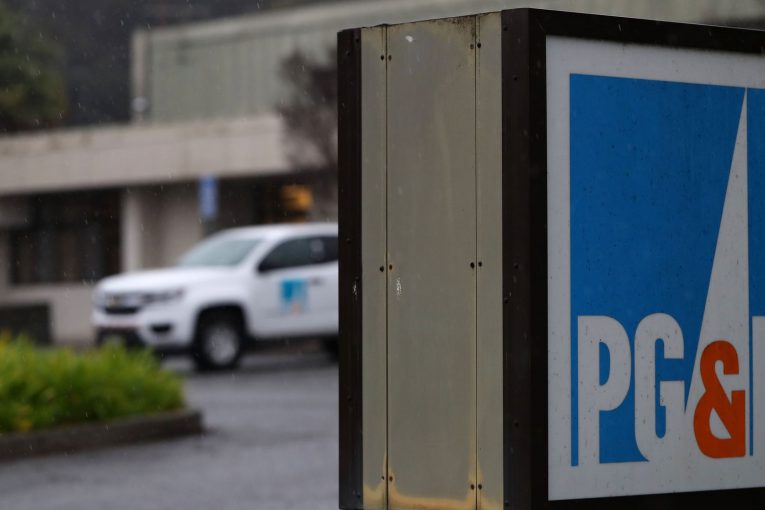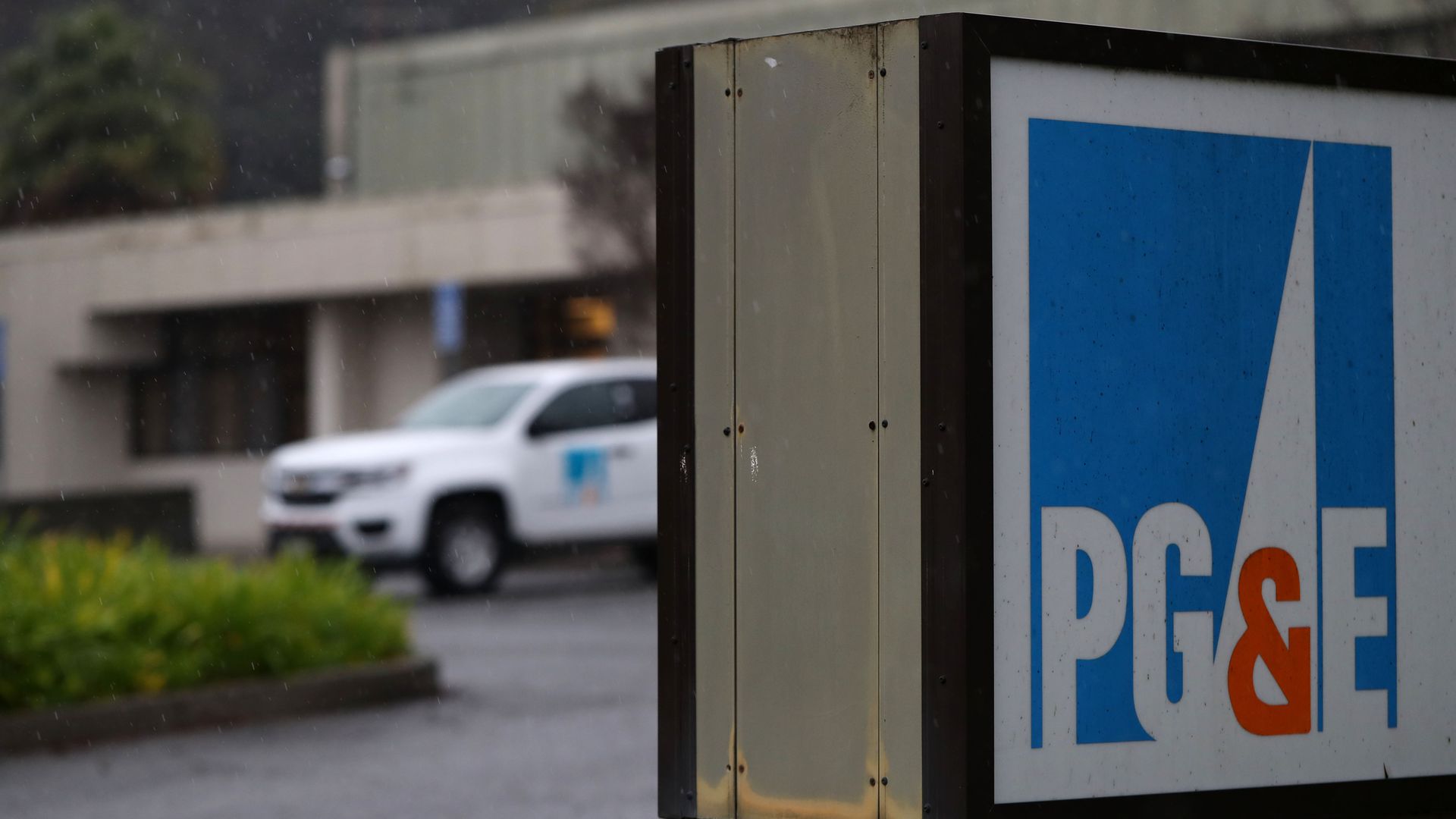
 In an effort to fundamentally reform PG&E, this legislation will turn it into a public utility focused on safety, reliability, and affordability instead of profits
In an effort to fundamentally reform PG&E, this legislation will turn it into a public utility focused on safety, reliability, and affordability instead of profits
Monday, Senator Scott Wiener (D-San Francisco) introduced legislation which would turn PG&E into a publicly owned utility, the Northern California Energy Utility District. The legislation will fundamentally and structurally reform PG&E, whose faulty power lines have caused deadly wildfires, killing hundreds, incinerating thousands of homes, and destroying an entire community.
In response, PG&E triggered mass blackouts, turning off the lights to millions, harming families and businesses, undermining public safety, and jeopardizing the most vulnerable residents of our communities.
“PG&E is a failed utility with a track record of prioritizing profits over safety. The ham-handed, damaging mass blackouts it levied last year only serve to underscore how broken PG&E is,” Senator Wiener said in a statement.
He added, “It’s time for a new start: a utility focused not on Wall Street and shareholder profits, but rather on safety, reliability, affordability, and ratepayers. Public ownership of PG&E will allow California to hit the refresh button and create a utility focused on the public interest.”
Senator Wiener’s new legislation comes on the heels of the Senate passing SB 378, his legislation to hold PG&E and other utilities accountable for the damage caused by mass blackouts.
PG&E’s track record has shown that its basic business model is no longer viable. PG&E has focused on profits for shareholders at the same time it has de-prioritized safety investments. As a result, PG&E’s infrastructure has deteriorated and become unsafe. In addition, PG&E’s business model — in which the company makes more money as it expands its transmission lines in to wildfire-prone areas — creates an incentive to expand endlessly and thus become even less able to take care of its own infrastructure.
Converting PG&E into a publicly owned utility will focus the company away from profits and Wall Street and toward public safety, reliability, and affordability of rates. Publicly owned  utilities have a strong track record of operating in the public interest.
utilities have a strong track record of operating in the public interest.
“In San Francisco, we are continuing our work to acquire PG&E assets so we can deliver clean, renewable energy for all of our residents,” said San Francisco Mayor London Breed. “Senator Wiener has been a strong ally in our local efforts and I support his proposal to have California take over all of PG&E, as his bill will protect the rights of local jurisdictions to create a publicly owned utility. We need aggressive action if we are going for meet our climate goals and change how we safely deliver power in our state.”
Senator Wiener’s legislation requires the State Power Authority, led by gubernatorial appointees, to initiate the purchase of all of PG&E’s shares. Once PG&E has been acquired, ownership will transition to a publicly owned utility, the Northern California Energy Utility District. Under the District will be a public benefit corporation called Northern California Energy Services, which will operate the utility on a day-to-day basis.
Jan Pepper, CEO of Peninsula Clean Energy, a Community Choice Aggregator (CCA) said: “As the energy supplier for San Mateo County, we at Peninsula Clean Energy want to see reduced energy delivery costs for our customers and a laser focus on safety.”
She added, “This is our opportunity to achieve these goals by transforming PG&E in to a not-for-profit customer owned organization. By increasing transparency, lowering PG&E’s cost of capital and removing their need to put shareholders before their customers, we can reorient PG&E to deliver safe and reliable service.”
“As a grape grower with a family winery, intentional blackouts during fire season inevitably coincide with harvest and the peak of tourism in wine country,” said Joy Sterling, CEO of Iron Horse Yinyards who is a member of the State Food and Agricultural committee. “The loss of business is an extremely costly problem, and the impact of the shut-downs on our employees is also terribly concerning. While blackouts can be a useful public safety tool, it’s clear that PG&E would rather avoid liability for its faulty equipment and let businesses suffer instead of fixing their grid.”
She added, “As Chair of the Democratic Party Rural Caucus, I appreciate that this bill would let local governments and tribes, including small rural governments, acquire PG&E’s assets and form their own local utilities. Our cities have the greatest concentration of assets, and too often in re-organizations, rural areas are left with no left assets.”
According to Richard Skaff, the Executive Director of Designing Accessible Communities, a nonprofit that works to assure that the built environment is accessible for everyone, including individuals with disabilities, “PG&E has been given permission to turn off our electricity because the money we paid to that private, for-profit electric utility went to their executives as bonuses instead of being used to upgrade their grid.”
Mr. Skaff added, “PG&E, giving virtually no notice, turned power off for thousands, causing major issues for those relying on electricity-powered life-supporting medical equipment. And what did they do for those whose lives depend on medical equipment that will only operate with consistent electricity? They left a door hanger on the front door letting you know they were there!”
Cities are currently able to create municipal utility districts, and this legislation will not take away that ability. San Francisco, which has expressed interest in creating its own local utility, will be free to continue on its path toward municipalization, along with any other cities. Additionally, under this legislation, local governments and federally recognized Native American tribes can, around the time of the transition, acquire PG&E assets in order to form locally owned public utilities.
This legislation will also fully protect PG&E’s workers. PG&E’s entire workforce will be transitioned to the new entity, and their collective bargaining agreements, wages, benefits, and retirement benefits will remain intact.

I’d feel a lot more comfortable about this if it were being authorized by a different legislator, someone a bit more fiscally conservative and with a sense of business and economic theory. Unfortunately, California ran out of those.
Let’s hope “workers” does not include management.
And., let’s hope they are not grandfathered into PERS…
The proposal takes all of the liabilities, deferred maintenance, lawsuits, pension liabilities, medical costs, etc., from the private sector to taxpayer/customer obligations… those need to be addressed.
Have no problem with the concept, but “the devil is in the details”.. . here, transparency is definitely needed… and true economic analyses… and ensuring that the price paid by the public, for shares, ownership, is proportional (at least) will benefit the public…
That is unclear, at this point.
It could be a great way for current shareholders to get great profits (selling shares) while leaving the liabilities to taxpayers/rate payers…
If it proceeds, we’ll see (and may “pay”)…
If it improves service, cuts risk, maintains or lower rates, I’m good… just not convinced it (the proposal) is good for utility consumers… yeah, in this, it is all about me.
Strangely(?), Wiener and other supporters of a government-run, power monopoly never mention the cost of repairing and upgrading PG&E’s deteriorating infrastructure, after they spend billions of dollars to buy it. All they do is talk about buying the assets. (Again without mentioning the cost to ratepayers.) How can the run-down grid, wires, poles and standards be any safer just because the state (or, locally, VCE) owns them? And, amidst the clamor to buy out PG&E, the City of Davis and the state are implementing laws to eliminate use of natural gas, which is a relatively clean, inexpensive heating source for most existing homes and businesses. In my opinion, if the politicians succeed in taking control of our energy supply, any hopes of “affordable housing” will be gone forever.
Rick: This is exactly what I was “wondering”, as well. Especially the part regarding the cost of repairing and upgrading PG&E’s infrastructure.
If I’m not mistaken, PG&E rates are exactly the same – whether you live in a city, or in some far-flung community (where costs to provide power are actually much higher). I’m guessing that this is a government “requirement”, from long-ago.
This should be explained, as well as any requirements from the PUC.
I’m not aware of any significant “expansion” of areas served. (Just more customers, in already-existing areas.)
Ron, not positive, but I think there is some type of state law that requires PG&E to offer electrical service to people, even if they are in remote or fire-danger zones. And even closer to home, I believe that once cities and counties approve building in high-risk zones (such as floodplains), PG&E is likewise required to provide services. Hoping to find time to learn more about this aspect.but, meanwhile, a government takeover seems very dangerous for all ratepayers. Imagine that the move to electrify autos and other forms of transportation is successful and the government owns not only all energy to function in our homes but, also, to travel – anywhere!
Rick: That’s my understanding, as well.
It doesn’t seem quite “fair” to impose such requirements on PG&E, and then “complain” about the results. Especially since they (also) have to seek approval from the PUC for any rate increase.
They do not operate in a free-market environment. They are almost a quasi-government agency, themselves!
I am not at all convinced that PG&E did a lousy job, given the restrictions imposed upon it by government. Could be, but I’ve only seen “claims” regarding that, which are not backed up by presentation of facts.
It does seem that dangers have increased, probably as a result of lack of maintenance/upgrading. But again, who would pay for that, since it’s apparently not the customers in far-flung areas who would do so.
Truth be told, fires are ultimately going to start “anyway”, in those areas.
Rick
It’s even more dangerous to have a corporation that has powers of eminent domain, is able to pass through large chunks of costs to ratepayers at little or no risk to shareholders (in the recent return on investment case, we asked for instances of disallowances and the utilities came back with trivial examples), has captured the CPUC (apparently with just a few bottles of wine (joking) but more seriously with job offers such as for Carla Peterman), and are direct political players at the state capitol. Don’t pretend that corporations are benevolent entities that are always looking out for us, and recognize the checks and balances have largely eroded.
How many tribes and rural areas won’t be able to afford to buy their infrastructure? What happens then? And then when they have to upgrade it and can’t . . . what then? More sparks? More subsidies? Which encourage living in fire-prone areas?
The proposal is to run it like the Long Island Power Authority. LIPA contracts with a separate private entity to maintain its services, which means the IBEW can keep its pensions (but not so much its political clout), and an appointed board like the California Independent System Operator (CAISO) would govern. CPUC (minimal) oversight would disappear.
The basic costs would largely stay the same, but the cost of capital investment would fall by almost half (and the state could buy the debt so that those funds stay in state instead of flowing out of state). Interests would be much more aligned with customers, which is NOT the case currently (having been in many meetings and hearings with PG&E staff.)